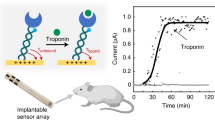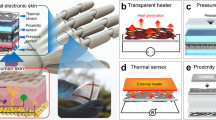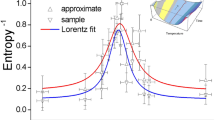Abstract
A THERMISTOR is a resistance body which has a high negative temperature coefficient of resistance, and is a valuable circuit element with a large variety of applications. Thermistors can be used as sensitive thermometers in cryoscopic measurements1 and also in place of thermocouples for measuring the lowering of vapour pressure of aqueous colloidal solutions2. At a condition of steady state, the droplets of solution and solvent deposited on the tips of the thermistors have a constant difference in temperature which can be measured as a difference of resistance in an A.C. bridge circuit. The construction and operation of a simple A.C. thermistor bridge, used for measuring the osmotic activities of aqueous solutions, has been described by McGee and Iyengar (submitted for publication elsewhere).
This is a preview of subscription content, access via your institution
Access options
Subscribe to this journal
Receive 51 print issues and online access
$199.00 per year
only $3.90 per issue
Buy this article
- Purchase on Springer Link
- Instant access to full article PDF
Prices may be subject to local taxes which are calculated during checkout
Similar content being viewed by others
References
Zeffert, B. M., and Hormats, S., Anal. Chem., 21, 1420 (1949).
Brady, A. P., Huff, H., and McBain, J. W., J. Phys. Coll. Chem., 55, 304 (1951).
Taylor, G. B., and Hall, M. B., Anal. Chem., 23, 945 (1951).
Author information
Authors and Affiliations
Rights and permissions
About this article
Cite this article
KULKARNI, S. Molecular Weight Determination by Thermistors. Nature 171, 219–220 (1953). https://doi.org/10.1038/171219b0
Issue Date:
DOI: https://doi.org/10.1038/171219b0
This article is cited by
-
Studies on the thermoelectric microdetermination of molecular weight
Mikrochimica Acta (1961)
Comments
By submitting a comment you agree to abide by our Terms and Community Guidelines. If you find something abusive or that does not comply with our terms or guidelines please flag it as inappropriate.



